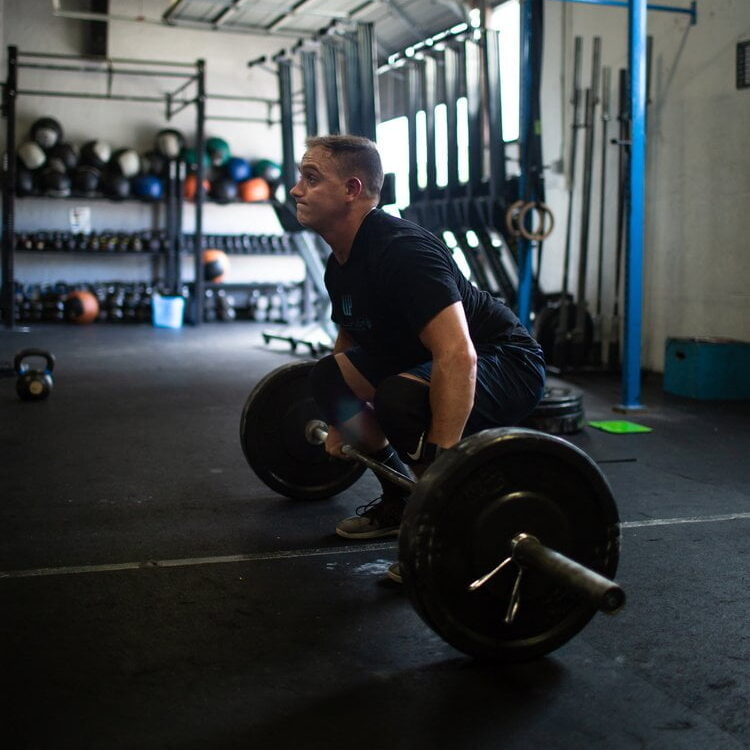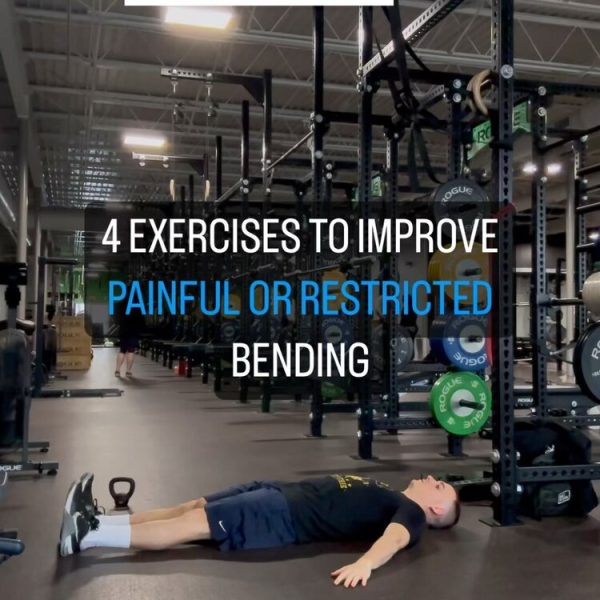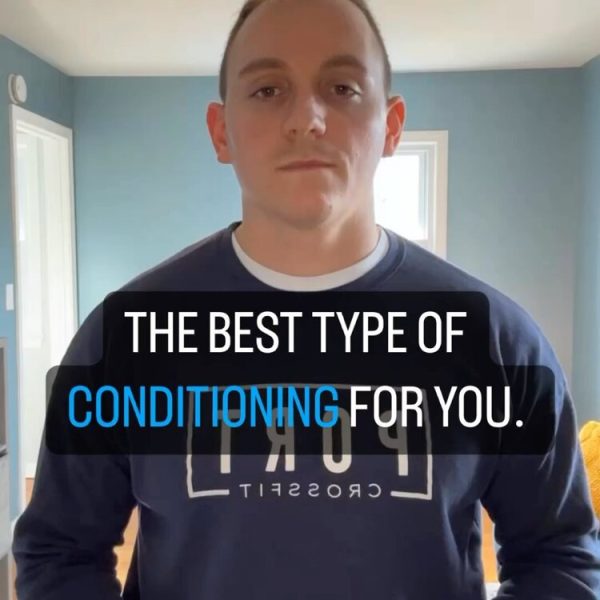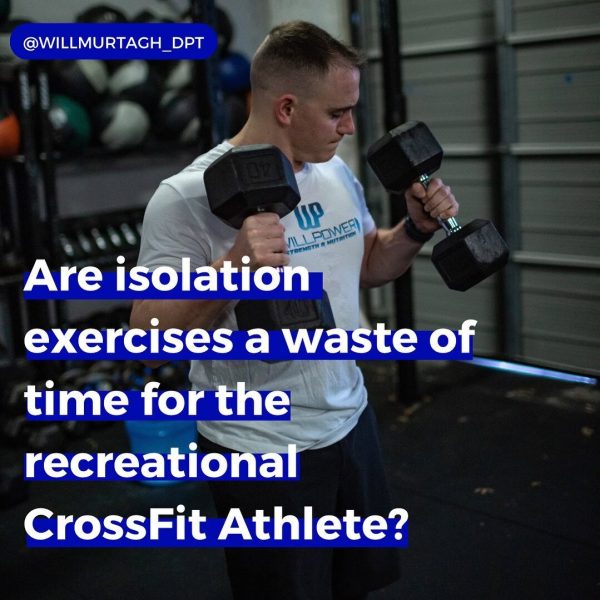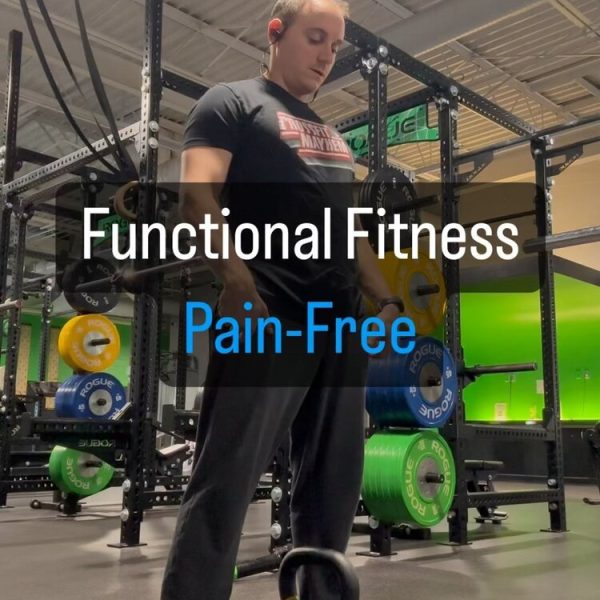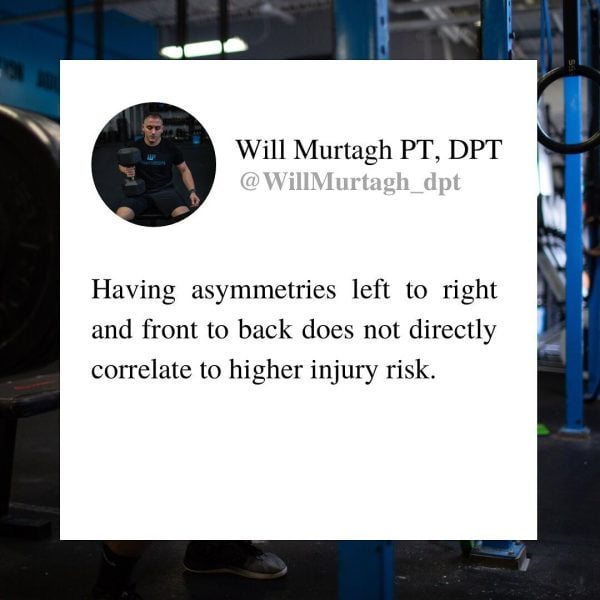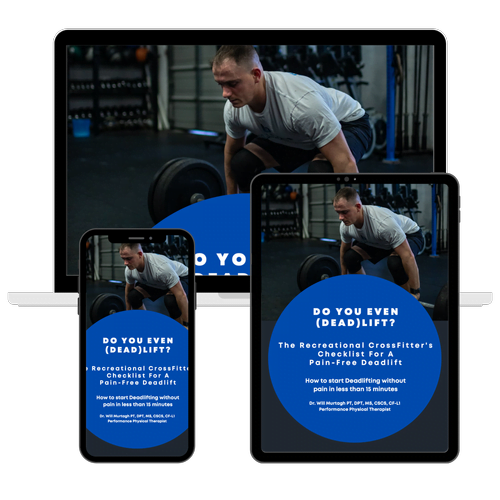Dr. Will Murtagh is a performance physical therapist and writer who helps Fitness Athletes elevate their fitness and train pain-free.
So this week, I will take you guys through the steps I and many other strength and conditioning coaches go through to create a workout plan for athletes. I have often seen athletes looking to improve their performance on the field, on the court, or in the gym do a quick Google search and find the first cool-looking 4-to-6-week workout programs they find.
Hey, to be honest, I was one of those athletes for some time. These workouts are typically found on websites like Bodybuilding.com, T-nation, etc. Now, these websites may (or may not) have certified personal trainers coming up with aesthetically pleasing daily workouts – hence the reason they catch the eye of the people looking for them.
But, as an athlete, it is required, not suggested, to use training methods in a way that will produce the adaptations that are specific to the demands of your sport. That is, if improving performance is truly the priority. Athletes do not train for weight loss or low body fat to look good; they train to win.
How To Create A Workout Plan For Athletes
Crafting an effective training program for athletes is an art that requires a personalized touch. Recognizing the unique needs and capabilities of individual athletes is paramount in ensuring their optimal performance and reducing the risk of injury. Strength training isn’t a one-size-fits-all concept; rather, it’s a tailored journey that involves understanding an athlete’s fitness level, training age, and specific goals.
By customizing a regimen that focuses on major muscle groups and incorporates the principles of progressive overload, coaches and trainers can guide athletes toward success. Considering factors like training phase, rest days, and the type of exercises that best suit the individual athlete ensures a well-designed program that promotes growth while minimizing the risk of overtraining or injury.
Let’s dive into the key steps in formulating a comprehensive training plan that sets athletes on the path to peak performance.
1) Determine what the goal of the training program is
We just discussed this. However, it is the most important step and cannot be overstated. What is your goal? Why are you getting up early or staying up late to make sure you get your strength training in? Are you preparing for next season? Are you preparing for a competition coming up soon? Or are you just trying to be as fit as possible?
Whatever the goal is, it doesn’t matter. Still, it needs to be established so that it can provide direction for the training plan and establish criteria for the inclusion and exclusion of certain exercises or training practices.
An Olympic weightlifter does not necessarily train like a bodybuilder, and a bodybuilder does not necessarily train like a football player. Notice I say “necessarily” because some movements are staples in training and will always be included. Determine the goal and get after it every day.
2) What phase of the year is the athlete in?
This is a step I think many people overlook when writing a program. Let’s say, for instance, you are preparing for the upcoming soccer season. At the high school and collegiate levels in the United States, soccer is typically played in the fall. So, if you are anywhere in December through roughly the end of May, you are currently in the “offseason.”
The offseason is a time to lay the training base of an athlete, both in strength and in conditioning, and thus, should not be “sport Specific.”
The focus should be getting as strong as possible and working on their aerobic training so that when the training does get sport-specific, they are prepared physically to not only withstand the demands of sport but be resistant to injury and a better raw athlete than the year prior. This principle stands for any athlete in any sport. The year must be broken down into a Yearly Training Plan consisting of phases that optimize certain qualities and maintain others.
This is vice versa for the preseason and in-season. The focus should be on improving or maintaining sport-specific qualities, respectively, and not improving capacity.
For instance, for the same soccer player, strength training will be lower volume and higher intensity in the preseason and in season so that more soccer-specific training, like ball drills, situational practice, and short-sided games, can be tolerated and strength maintained.
3) Determine the training age of the athlete and program difficulty
Once we know what we are trying to get out of the training and what phase of the year we are in, we need to determine the training age because this will indicate what movements are included, the specific pairing of movements, and the appropriate volume and intensity of movements.
Training age is simply the number of years that you have been strength training with the intent of getting stronger and improving performance.
I mention intent to get stronger and improve performance because doing X number of push-ups and sit-ups a night when you were in elementary school. However, it could elicit a strength stimulus and will probably not have much effect on your ability to improve your back squat and bench press as an adult.
Training age is important for two reasons. The first is that in those people with “young” training ages, such as under a year, it will not take very much for them to get stronger, and the weight prescriptions should simply be to add weight to the bar each week.
This is why programs like Starting Strength work so well for new lifters. Add 5 lbs. to the bar weekly for a year, and you’ve put over 250 lbs on your squat.
Contrary to this, those with “older” training ages need programming that will not only challenge them but also need variety and fluctuations in volume and intensity to elicit a strength adaptation. The difference in need is based on the adaptation of the nervous system and the improved ability to recruit motor units for muscular contraction.
Although important to know, the actual science behind this is out of the scope of this article, so just knowing why there needs to be a difference will suffice.
The second reason that training age is important is that the actual exercises must be progressed based on an athlete’s prior experience and ability. For athletes with a young training age, asking them to back squat without developing the pre-requisite postural strength, kinesthetic awareness, and mobility wouldn’t be appropriate. This is where exercises like a goblet squat or even a simple air squat would help an athlete develop these qualities.
This way, when it comes time to back squat, it looks how it should, and the athlete is kept safe. But, like programming intensity and volume, for athletes with older training ages, more advanced or challenging exercises must be prescribed so that they, too, can make strength adaptations.
If you are an athlete with 1+ years of training under your belt, an air squat or a goblet squat may not be sufficient enough for you as a main movement to maximize your strength adaptation or elicit a strength stimulus at all.
A progression I like to use for the lower body movements is as follows: Air Squat, Goblet Squat, Front Squat, and then Back Squat With this progression, each movement builds on the previous one and prepares you for the next.
4) Determine the movements that will be included
If you have determined where an athlete is in the training year and know your training age, you can have a pretty good idea of where you stand in the kind of progression an athlete needs regarding intensity and volume. Also, you can make a pretty good assessment of the level of difficulty of the exercises that you will be using in the program to start.
If you are reading this article in the hopes of learning how to write a program for an athlete or yourself, chances are the athlete should begin with the basics, such as perfecting the air squat, so that they can move on to more complicated exercises.
But daily workouts are not only composed of air squats. Other movements or movement patterns must be included to train the rest of the body. The movements that should be included are considered foundational for the human body and should comprise the bulk of your training. They include Jump, Squat, Hinge, Horizontal push, Horizontal pull, vertical push, vertical pull, and Carry.
For an athlete or anyone, these are the movements we must be concerned with. These movement patterns will not only incorporate the most amount of muscle mass, bring multiple joints through their full range of motion, and elicit the greatest hormone response, but, they will have the largest carry-over to the field or court. The reason is that all movements in sports follow these movement patterns. An athlete will either have to jump, squat, hinge, push, pull, or carry something or someone to win the game, event, or match.
They will not have to curl, crunch, or calf raises during game time; I can almost guarantee it. That is not to say that isolation exercises, such as curls, are not useful, but they should not be the focus and should only be present to improve the performance of compound movements. The structure of the day should look something like this:
Box Jump – Plyometric
Back Squat – Main movement
Barbell RDL – Assistant movement #1
DB Split Squat – Assistant movement #2
Glute Bridge – Isolation movement
Farmers Carry – Carry
This is by no means the only way to structure the day. Still, it represents that the most important, most neurologically demanding, and more fatiguing exercises should be placed at the beginning of the session. Generally, five to six exercises should be enough to accomplish everything needed in one session. It also will be the most the average athlete can recover from. Especially if they are also going to class and/or practice. If, throughout training, an athlete can handle more than add in volume slowly.
Now, I know many people reading this will wonder where the “core” work is and when it should be done. Unfortunately, the bulk of core training will be done as you perform your squats, hinges, pushes and pulls. No number of crunches will ever get your abdominals and lower back as strong as a heavy, properly progressed back squat or deadlift progression.
But, if you are looking for added core work, you would want to use exercises that train the core isometrically, such as Planks, Dead Bugs, and Palloff Presses. The reason is that the core’s main responsibility is to stabilize the spine during movement, not to move the spine, and should be trained accordingly.
5) What kind of Pre-hab/ Correctives does an athlete require?
The final step in the process of writing a training program for athletes is to see where their weaknesses and deficiencies lie that may predispose them to injury or less optimal performance. For instance, is an athlete tight in their hips, where their hip flexors are causing them to shift to their toes and stop above parallel in their squats?
Or is an athlete tight in their lats, causing them to have a poor front rack position in vertical pressing movements? These issues need to be determined by a coach so that athletes can address them with corrective exercises either before, during, or after the workout.
A good option for incorporating these is as a warm-up to get lagging muscles firing properly and increase body temperature in the process. Doing so will help improve movement quality and likely improve strength and safety.
Unfortunately, there is no cookie-cutter recommendation for pre-hab and correctives. Athletes just need to move, and coaches need to assess where they are lacking in certain movement patterns.
Common mistakes athletes make in training
Training is the bedrock of an athlete’s journey toward excellence, but missteps in program design can significantly hinder progress and pose risks to their well-being. Athletes often encounter pitfalls when their training plan lacks specificity, doesn’t align with their fitness goals, or overlooks their training age and individual needs.
Neglecting to incorporate proper rest days, pushing too much weight too soon, or focusing solely on isolated exercises rather than major muscle groups are also common blunders. Such errors can impede muscle mass development, hinder strength exercises, and even elevate the risk of injury. Let’s explore some frequent mistakes athletes make in their training routines, shedding light on how these missteps hamper progress and performance.
1) Using heavyweight too quickly
In the pursuit of strength gains, athletes often gravitate towards lifting heavier weights right from the outset and opt for a lower number of repetitions. However, overlooking the importance of incorporating lighter weights and high reps in the initial accumulation phases and always chasing heavy loads can be a critical misstep.
These phases serve as a crucial foundation-building stage, aiding in the development of tissue capacity and muscular endurance. As well as is also the best way to build muscle mass. Prioritizing these lighter loads and higher reps is instrumental in preventing injury and setting the groundwork for safely lifting heavier weights in subsequent phases throughout the year. This approach not only fosters injury resilience but also establishes a solid platform and is the first step in a principle-based training process and maximal strength development down the line.
2) Not taking time off from the weight room
The significance of rest days within a weekly schedule cannot be overstated. Athletes often find themselves pushing the boundaries, training on consecutive days without allowing their bodies the essential recovery time. However, this practice can hinder progress rather than propel it forward. To optimize training benefits, it’s recommended to incorporate two strategic rest days in a week’s regimen.
One of the rest days of the week should be dedicated to active recovery, focusing on promoting blood flow, enhancing mobility, and aiding in the repair of muscle tissues. The other rest day should encompass complete and total rest, allowing the body ample time to rejuvenate. Ideally, a well-balanced routine often involves five days of focused training and two days allocated for rest and recovery.
Understanding the concept of the stimulus adaptation recovery curve becomes pivotal here: the body and central nervous system need sufficient time to adapt to the stress of training, and it is during rest that the process of super compensation occurs, ultimately leading to enhanced performance and reduced risk of overtraining injuries. Incorporating strategic rest days in the training schedule is not just a luxury but a necessity for athletes striving for optimal performance.
3) Making every training session a competition
Engaging in constant competition within your workouts might seem motivating, but it can have adverse effects on your long-term athletic performance. Rather than solely focusing on outdoing others every day, prioritizing training and emphasizing your development is crucial. Sustainable progress takes precedence over immediate victories.
Opting for a more balanced approach that emphasizes steady growth and personal development is key. This involves creating a workout program that is tailored to your different goals and caters to your unique needs. An individually designed training program is invaluable as it hones in on what you need to work on, addressing weaknesses and fostering strengths.
By emphasizing building your foundation working on your skills, and improving weaknesses, you pave the way for substantial and sustainable progress, ultimately yielding the best results in the long run.
4. Not Working with a Coach
One of the most significant mistakes you can make in your fitness journey is trying to figure out your training without the guidance of a coach. While it might feel empowering to design your workout program, the reality is that the time spent deciphering optimal training strategies could be better invested in actual training.
I’ll be honest—I used to resist hiring a coach, mostly out of pride. However, when I finally embraced the support of a knowledgeable coach, the impact on my gains and overall performance was undeniable. Working with a coach, especially through programs like my 1:1 Pain-Free Performance Program, allows you to “skip the line” to performance and avoid the pitfalls of trial and error.
A coach brings a level of objectivity and challenge that self-directed training often lacks, which ensures you have a more efficient and effective training program. Investing in the expertise of a coach is an investment in your future self.
Wrapping up on how to create a workout plan for athletes
There you have it! These are the steps that I and many other Strength & Conditioning Coaches take in developing an effective workout routine for the athletes. As I mentioned, this is by no means the only way to write an effective program, but certain principles must be adhered to on a physiological and practical basis.
Training should reflect the time of year athletes are in, should be appropriate for their ability, should incorporate and prioritize foundational movement patterns, and should make them move better as an athlete. Hopefully, you can take this information and develop an effective program for your athletes or yourself!
As we wrap up, I’d love to extend an invitation to join the 1:1 Pain-Free Performance Program. The program is about personalized, adaptable, and sustainable strategies crafted to help athletes like you eliminate pain, boost fitness levels, and amp up performance. It’s not just about fixing what’s bothering you now; it’s about ensuring a smoother, injury-free journey ahead.
Are you curious to see how this program can level up your game? Let’s chat! Book a free consultation HERE, and together, let’s pave the way to achieving your athletic dreams while keeping injuries at bay. Your performance goals deserve a program that’s tailored to you, and I am looking forward to helping you achieve them!

